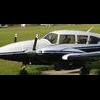1966 20E
-
Members Online
- jetdriven
- Brian2034
- Bolter
- OR75
- rbmaze
- EricJ
- GeneralT001
- ohdub
- mcbuser
- outermarker
- DanM20C
- Danb
- WilliamR
- Jake@BevanAviation
- sdmideas
- Bonanza flyer
- kortopates
- RescueMunchkin
- 4cornerflyer
- midlifeflyer
- Walk
- ericrynehess
- raymondscott0321
- Fix
- Jim Peace
- KSMooniac
- PaulM
- LANCECASPER
- bigmo
- FlySafe
- BrettV
- Ragsf15e
- dzeleski
- bluehighwayflyer
- Zorro
- INA201
- LOCOLJ


Recommended Posts
Join the conversation
You can post now and register later. If you have an account, sign in now to post with your account.